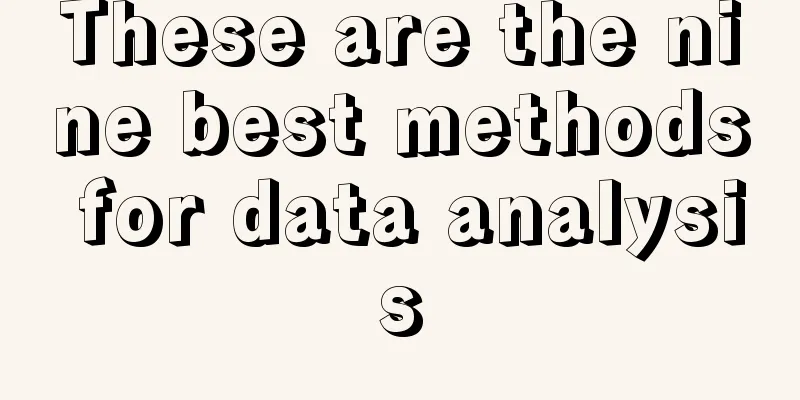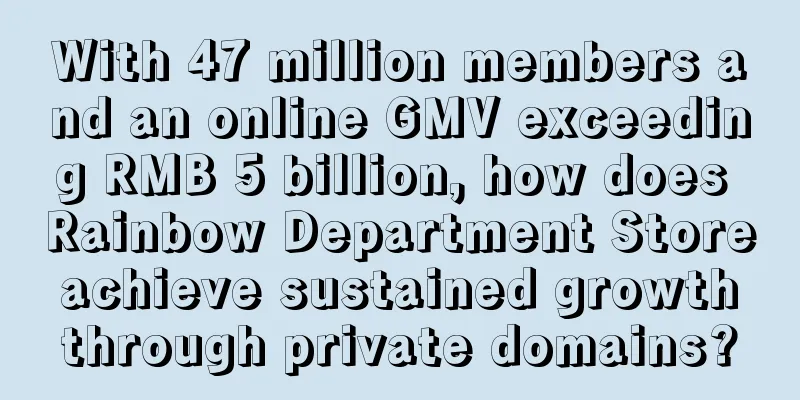Video account live broadcast room user path and two key models

Video Account is one of the only two platforms with huge traffic this year. Too many people are advocating to join the video account, especially live broadcast! However, few people can really explain how to do live broadcast on video account? Today I will talk to you about how to do live streaming on video accounts! First of all, we need to know that the live broadcast traffic of a video account can be roughly divided into two types: public domain traffic and private domain traffic. The public domain traffic can be divided into the first wave based on the venue data of the previous game, and the platform will give a certain initial traffic; the second wave is the dynamic spiral test traffic of the crowd, which mainly tests the ability of our live broadcast room to carry out. If it is well carried out, it is possible to obtain the third wave of traffic from the live broadcast square. In this process, the most important role of private domain traffic is, first, to help us create a crowd label at the beginning, so that we can reach more accurate groups when the platform is pushed; second, when we take over the crowd, we can supplement the relevant data according to the actual situation. Therefore, the two types of traffic, public domain traffic and private domain traffic, complement and cooperate with each other during the live broadcast of video accounts. The most important thing in the whole video live broadcast process is to do a good job of accepting the crowd ! In this link, there are two very important models, which we call the retention model and the transaction model . This is the focus of today's article. Before we talk about these two models in detail, let's first take a look at what the user's general path is when he enters our live broadcast room. Let’s take the example of a live streaming room for selling goods: The following figure shows the 6 correct core steps for a customer to take after entering our live streaming room. The first is public domain traffic, including the initial traffic pushed by the first wave of platforms, and also the users who flow into our live broadcast room after the group splits. Each user of the video account has its own label, such as those who want to learn about the video account, those who want to learn parenting knowledge, etc. The second step is that after the user enters the live broadcast room, there are two possible behaviors in the live broadcast room. One is that if the user feels that your live broadcast room is not good, he will directly exit! The other is that he will stay. Once the user stops by our live broadcast room, we will enter the third step, which is breaking the ice. For example, the anchor interacts with the user through speech and other means, and the user may be attracted by your live broadcast content and spontaneously perform certain specific behaviors, such as liking, commenting, etc. In this way, the user will have a specific behavior label. Then the fourth step: After the user has interacted with the anchor, he will have a certain degree of trust in you. At this time, he may think, hey, you are not bad at speaking, so he may choose to follow you! After following, if it finds that a product or service you share is exactly what it needs, or if your content triggers its desire, it will choose to place an order. This is the fifth step. The last step is for the platform to perform fission based on the user's interest tags and behavior tags, and attract more users with the same tags in the public domain into your live broadcast room. Well, the above is a complete path for users after they enter the live broadcast room. Of course, there may be loss at every step on this path. What we need to do is to ensure that the conversion rate of each step can be maximized. At the same time, based on this path, we can also realize that our video account live broadcast, if you want to do it for a long time, then when we are doing the live broadcast room, we must create our live broadcast hit plan by creating content for core customers. Because if the users you attract are not accurate users, it will be very difficult to ensure the conversion rate in the subsequent paths. After all, they are not your target users and are definitely not as interested in your content as accurate customers. On the other hand, when our live broadcast content is centered around precise users, based on this path, we can create a closed loop through words, scenes, and other content. When we can successfully create this closed loop, you will find that your traffic will increase very quickly. So this can be seen as a traffic rhythm model. Well, how do you ensure the conversion rate on this path? In fact, we can find out what are the two most critical links in this process? They must be the two steps of staying and converting! If you can do these two steps well, your entire path will definitely be smoother, and the overall conversion rate will definitely be higher! At the same time, if we can do these two links well, in fact, it is in disguise to do a good job of attracting the crowd in our live broadcast room. I believe everyone can understand this! Okay, so, next let’s focus on the retention model and the transaction model, these two very important models. 1. Dwell ModelI have a question for you. There are two live broadcast rooms, one with 10 people online and the other with 10,000 people online. So, is the difference between these two live broadcast rooms reflected in the anchor's ability to retain people or the speed of pushing streams? The answer is the streaming speed! The streaming speed is mainly affected by the user's stay So we must find a way to increase our push speed. And here, the first model is generated: the stay model The so-called retention model refers to the population portrait and number of users currently staying in the live broadcast room. How do you understand this sentence? When a crowd portrait stays in our live broadcast room, the platform will amplify this crowd based on this crowd portrait and their common characteristics. For example, I am doing a live broadcast now, and now in my live broadcast room, the students who are listening to my class may have a common feature of learning video accounts. Then crowd amplification means searching on the platform for users who also have the need to learn video accounts. Then we extract common characteristics from the number of users. This is done based on the population portrait of the users who stay. For example, if there is only one person in my live broadcast room, it is actually very difficult to extract characteristics from this one person and do a search. After all, you can't or can't accurately summarize the characteristics of a person. But if there are 100 people in the live broadcast room now, then it would be relatively easier to extract common characteristics from these people, right? And there may be more characteristics extracted. In this way, the search may cover more people. In addition, I would like to ask everyone a question. What affects the speed of streaming in your live streaming room? Some friends may answer: transaction? This may be the answer on platforms such as Douyin and Kuaishou. For a live streaming room with goods, the biggest factor affecting its streaming speed is transaction! But on the video account side, this logic is wrong! In the video account live streaming room, its transaction will not affect the streaming! Therefore, we often see that on the video account side, there are many live broadcast rooms with tens of thousands of people online, and even some live broadcast rooms with millions of people, but its transaction volume is actually not as high as expected. Therefore, transactions on the video account side cannot affect its push flow. And conversely, if transactions can affect its push flow, then when I first started broadcasting, I could just find someone to place 10,000 orders, and then your live broadcast room would explode, right? But in fact, it can't explode, and I believe many people have tried this. Right! In the video account, can you fake orders? Yes, you can! But the point of fake orders is that you must have a high streaming speed and the crowd needs to be corrected. Only then can you inject your human operation and get a great effect. Otherwise, there is no point in fake orders. So let's get back to the point. Transaction cannot affect the push flow. What can really affect the push flow? The number of people online in your live broadcast ! The number of online users in a live broadcast room directly determines the streaming speed of the room! So looking back, the essence of the retention model is to rely on the crowd portrait of the live broadcast room to match more public domain users, so as to achieve more online people, and then to increase the push speed of the live broadcast room! In this way, it forms a positive upward traffic closed loop. Many people told me that there is no one in the live broadcast room. Why is there no one? It is because you don’t have a crowd portrait to match the users. Then the number of online people and the streaming speed are actually related. If there are not enough online people, the streaming speed cannot be increased; conversely, if the streaming speed cannot be increased, the number of people in your live broadcast room will always be stuck at that level. Therefore, when we use the retention model, it is divided into two steps: The first step is to find a way to retain people first, and then search and expose them to similar groups of people based on the population portraits of those who remain. However, in the second step, after the platform has pushed a certain number of people to you, you need to find a way to prolong their stay. If your stay is not good at this time, you need to think about whether your crowd is right. If the crowd is right, then through the live broadcast content, including words, scenes, etc., that is, the 6 steps we mentioned earlier, to achieve a closed loop of traffic, or to continuously increase the length of stay, so that your push speed will continue to increase, and finally feed back to your live broadcast room, so that the number of online people continues to increase. Therefore, in this process, the most important thing is actually your crowd strategy, that is, crowd portrait! Secondly, we need to find a way to stop. Regarding this point, many people may think of using fish ponds first! Using fish ponds as a stop. Is this method feasible? It is feasible, but not completely feasible! How to understand this sentence? From the perspective of the traffic of the live broadcast room, we use the fish pond to try to extend the retention time of our users, which is definitely effective. The longer the stay, the more people will be online in the live broadcast room, so that the speed of our live broadcast room will increase, so that the live broadcast room as a whole can enter a positive traffic increase closed loop, and the number of viewers in the live broadcast room will increase! So from this perspective, there is definitely no problem using the fish pond for retention. But why do I say it is not completely feasible? What is the core purpose of our live broadcast? It is to bring goods. The ultimate goal of increasing traffic is to make a deal! You use the fish pond to stay, although the data is up, but your deal may not be realized! The retention model matches users based on the existing population portraits, and then the attracted users continue to stay, which means increasing the number of online users. Although the push speed is increased, the platform basically matches the user portraits in your fish pond, which is not completely equivalent to your precise target population portrait. In this way, his final transaction will definitely not increase. Can you understand this point? 2. Transaction ModelOK, so what should we do in this case? Next, let’s talk about the second model, the transaction model. Dear students, do you think it is easier to find someone to stay in my live broadcast room or to find someone to make a deal in my live broadcast room? I believe most people will answer that it is definitely easier to stay, right? In fact, it is definitely easier for someone to stay in our live broadcast room than to make a deal. Based on this fact, it can be understood that a transaction made by a person in the live broadcast room must be more accurate than the user who stays there, right? So every time a transaction is completed in the live broadcast room, its user portrait will be passively corrected. The more transactions are made, the more accurate our user portrait will be. On the video account side, user transactions will not have much impact on the streaming speed of the live broadcast room, but it will affect our user portrait . Therefore, the essence of the transaction model is to rely on the cumulative number of people who have completed transactions in the live broadcast room, and use their portraits to match users and search for users with the same labels. Among them, the number of transactions determines the accuracy of the push. The transaction model cannot be used alone, it must be used based on the retention model. Their complete logic is: First, we have a group of online users. Based on the portraits of these users, we match more users with the same tags and guide them into our live broadcast room to increase the overall streaming speed of the live broadcast room. Then in this process, we try to make a deal. Once a user makes a deal, there will be a new crowd portrait. Then, based on the user portraits that have been made, we will match users and guide them into the live broadcast room to continue making new deals. If this process is done well, we can ensure both the traffic scale of the live broadcast room and the accuracy of the traffic. 3. Operational considerations for the two major modelsIn this process, there are several things to note when using the stay model and the transaction model in practice: The first thing to remember is that the transaction model does not make much sense for streaming. It is more helpful for the accuracy of traffic. So when we start broadcasting, especially when some new accounts are in the creation stage, we must first do the stay model to ensure that there are enough people online in our live broadcast room and the overall streaming speed is increased before using the transaction model. To put it in a way that everyone can understand, when you just start broadcasting, don't rush to place orders. When I consulted many friends before, I usually told them that when they first started live broadcasting, they don't have to rush to make deals. Just start broadcasting and broadcast casually! As long as you have the ability to retain users, it's enough. That is, you should first make sure that your live broadcast room has enough push flow. If one show is not enough, do two shows. Wait until the third show before starting to collect data. Why? Because we were just assisting in the beginning. What were we assisting with? We used the retention model to increase the streaming speed of our live streaming room. After that, we used the transaction model to create accurate crowd portraits. We gradually corrected the data. In fact, too many people, when doing live broadcasts on video accounts, always pay too much attention to selling goods. Of course, selling goods and realizing profits is our core goal, but it is actually very difficult to make a deal right away. Although it is the best situation to increase the streaming speed in the first live broadcast and then achieve the transaction, it is more likely to be an ideal state. After all, you are not a star, or a big V in the video account, and the traffic from the first broadcast may be large enough. Most ordinary people do it step by step when doing live broadcasts. Well, the second thing to note is that in a live broadcast, the stay model and transaction model are not used only once, but they are actually used repeatedly. For example, let's look at this picture For a healthy live broadcast room, such a data trend chart is relatively normal. If we observe carefully here, we will find that there may be multiple traffic peaks in a live broadcast! Each alternation between these peaks is actually the use of the stay model and the transaction model. For example, the blue line represents the number of people online in your live broadcast room, and the yellow line represents the number of transactions. According to normal logic, the number of transactions will increase as the number of people online increases, but the proportion will decrease. For example, if there are 10 people online, then there may be 8 people who make a transaction. When the number of people online increases to 100, there may be 50 people who make a transaction. When the number of people online increases to 1,000, there may be only 200 people who make a transaction. This is actually a normal phenomenon. Although the proportion is decreasing, the number of transactions is increasing. Therefore, in actual operations, we must find ways to continuously increase the number of online people and the flow of live broadcasts through the retention model. When it is almost at the peak, we will start to make transactions to adjust the crowd portrait and make it more accurate. After that, the data fluctuations usually experience another decline, which may be due to the anchor's insufficient capacity to undertake, or more likely because the crowd portrait is constantly being adjusted. So at this time, we need to make a retention model to increase the push speed and increase the number of online users. This will lead to a process of mutual correction, thus ensuring that our live broadcast room can be well guaranteed in terms of streaming speed and accuracy. This is why the more mature the live streaming room, the richer the team configuration. There will be positions like central control and assistant broadcast. Their role is to cooperate with the anchor. According to the number of online people, push flow, and transaction situation, the live broadcast content and anchor's words are constantly adjusted. Sometimes the anchor needs to speed up the pace, and sometimes he needs to slow down the pace. In fact, it is essentially to constantly switch between the stay model and the transaction model. According to these data indicators, the push flow speed can be increased at any time, or transactions can be made. OK, the above is a brief introduction and application of the video account live broadcast room stay model and transaction model. Author: Pai Ye Operation |
<<: Short videos are indispensable for variety show promotion
Recommend
7 videos, 230,000 followers, already a hit!
This article starts with the account "Chi Zao...
Who is there at the Paris Olympics?
The 2024 Paris Olympics is not only a global sport...
What courier does Shopbop use for domestic delivery? What are the shipping methods?
If you shop on a cross-border e-commerce platform,...
Single product GMV 3 million +, crowd assets increased 10 times, these brands broke through the circle of Douyin e-commerce supplies
Introduction: This article uses examples of brands...
It’s hot, have you made your plans for 2024?
It's the beginning of another year, and it'...
WeChat tightens commercial cooperation with public accounts, not to collect "tolls"
This article analyzes the evolution and commercial...
Is it easy to sell things on Amazon? How is it like to sell things on Amazon?
Amazon has a lot of traffic, so although there is ...
This generation of young people earns 50,000 yuan a month by opening an online pub
People's consumption and entrepreneurship meth...
I run a guild in Southeast Asia: I have 5,000 anchors and I am in the top 10 in one year
Southeast Asia, with its huge population base and ...
How long does it take to deliver from the United States to China? What can't be delivered by international express?
Now many friends buy overseas products. When you b...
What should I do if a Shopee customer gives me a 1-star negative review? How can I modify the negative review?
Domestic merchants who run stores on Shopee will a...
Your structured thinking may be pseudo-logical
This article carefully interprets the three classi...
What should Shopee local stores sell? How to operate?
For some friends, choosing to open a store on the ...
What did the brand account with the most fans on Xiaohongshu do right?
Recently, the joint venture between Mixue Ice City...
7 truths about Xiaohongshu
How can brands and businesses operate effectively ...









